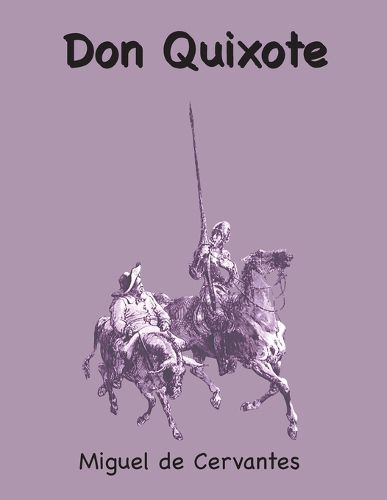Readings Newsletter
Become a Readings Member to make your shopping experience even easier.
Sign in or sign up for free!
You’re not far away from qualifying for FREE standard shipping within Australia
You’ve qualified for FREE standard shipping within Australia
The cart is loading…






This title is printed to order. This book may have been self-published. If so, we cannot guarantee the quality of the content. In the main most books will have gone through the editing process however some may not. We therefore suggest that you be aware of this before ordering this book. If in doubt check either the author or publisher’s details as we are unable to accept any returns unless they are faulty. Please contact us if you have any questions.
Harold Bloom says Don Quixote is the first modern novel, and the protagonist is at odds with Freud's reality principle, which accepts the necessity of dying. Bloom says that the novel has an endless range of meanings, but that a recurring theme is the human need to withstand suffering. Although burlesque on the surface, the novel, especially in its second half, has served as an important thematic source not only in literature but also in much of art and music, inspiring works by Pablo Picasso and Richard Strauss. Ever since the book's publication, the tall, thin, fancy-struck, and idealistic Quixote has been contrasted with the fat, squat, world-weary Panza, with Don Quixote's imaginings serving as the butt of outrageous and cruel practical jokes in the novel. Sancho, faithful and simple, must deceive him at certain points. The novel is considered a satire of orthodoxy, veracity, and even nationalism. In exploring his characters' individualism, Cervantes helped lead literary practice beyond the narrow convention of chivalric romance. He spoofs the chivalric romance with a straightforward retelling of a series of acts that redound to the hero's knightly virtues. Don Quixote's character gained widespread fame during its time, leading to the rapid adoption of the word quixotic in many languages. Characters such as Sancho Panza and Don Quixote's steed, Rocinante, are emblems of Western literary culture. The origin of the term "tilting at windmills" to signify attacking imaginary foes or displaying extreme idealism can be traced back to a pivotal scene in the book.
$9.00 standard shipping within Australia
FREE standard shipping within Australia for orders over $100.00
Express & International shipping calculated at checkout
This title is printed to order. This book may have been self-published. If so, we cannot guarantee the quality of the content. In the main most books will have gone through the editing process however some may not. We therefore suggest that you be aware of this before ordering this book. If in doubt check either the author or publisher’s details as we are unable to accept any returns unless they are faulty. Please contact us if you have any questions.
Harold Bloom says Don Quixote is the first modern novel, and the protagonist is at odds with Freud's reality principle, which accepts the necessity of dying. Bloom says that the novel has an endless range of meanings, but that a recurring theme is the human need to withstand suffering. Although burlesque on the surface, the novel, especially in its second half, has served as an important thematic source not only in literature but also in much of art and music, inspiring works by Pablo Picasso and Richard Strauss. Ever since the book's publication, the tall, thin, fancy-struck, and idealistic Quixote has been contrasted with the fat, squat, world-weary Panza, with Don Quixote's imaginings serving as the butt of outrageous and cruel practical jokes in the novel. Sancho, faithful and simple, must deceive him at certain points. The novel is considered a satire of orthodoxy, veracity, and even nationalism. In exploring his characters' individualism, Cervantes helped lead literary practice beyond the narrow convention of chivalric romance. He spoofs the chivalric romance with a straightforward retelling of a series of acts that redound to the hero's knightly virtues. Don Quixote's character gained widespread fame during its time, leading to the rapid adoption of the word quixotic in many languages. Characters such as Sancho Panza and Don Quixote's steed, Rocinante, are emblems of Western literary culture. The origin of the term "tilting at windmills" to signify attacking imaginary foes or displaying extreme idealism can be traced back to a pivotal scene in the book.